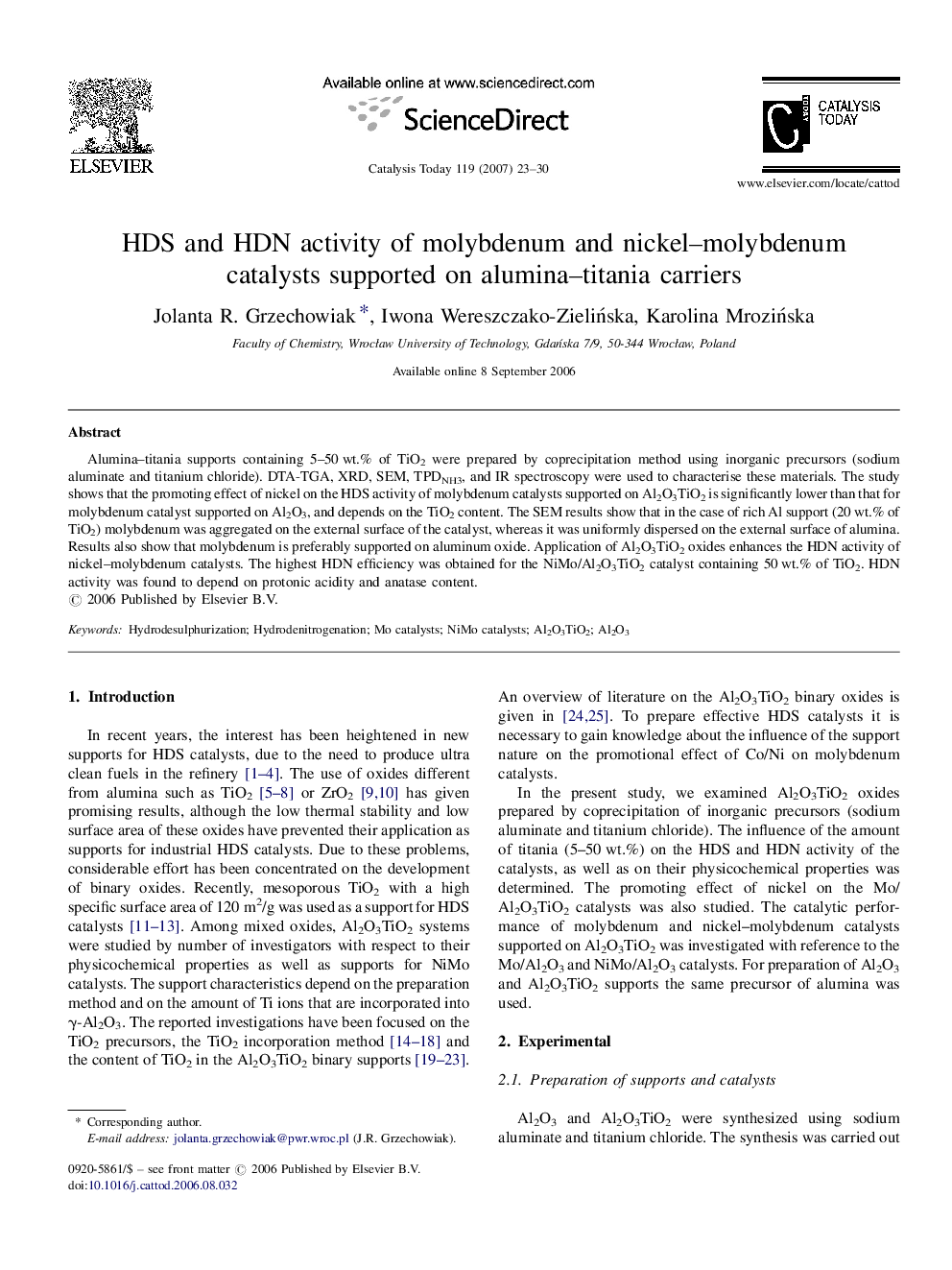| Article ID | Journal | Published Year | Pages | File Type |
|---|---|---|---|---|
| 58139 | Catalysis Today | 2007 | 8 Pages |
Alumina–titania supports containing 5–50 wt.% of TiO2 were prepared by coprecipitation method using inorganic precursors (sodium aluminate and titanium chloride). DTA-TGA, XRD, SEM, TPDNH3, and IR spectroscopy were used to characterise these materials. The study shows that the promoting effect of nickel on the HDS activity of molybdenum catalysts supported on Al2O3TiO2 is significantly lower than that for molybdenum catalyst supported on Al2O3, and depends on the TiO2 content. The SEM results show that in the case of rich Al support (20 wt.% of TiO2) molybdenum was aggregated on the external surface of the catalyst, whereas it was uniformly dispersed on the external surface of alumina. Results also show that molybdenum is preferably supported on aluminum oxide. Application of Al2O3TiO2 oxides enhances the HDN activity of nickel–molybdenum catalysts. The highest HDN efficiency was obtained for the NiMo/Al2O3TiO2 catalyst containing 50 wt.% of TiO2. HDN activity was found to depend on protonic acidity and anatase content.
